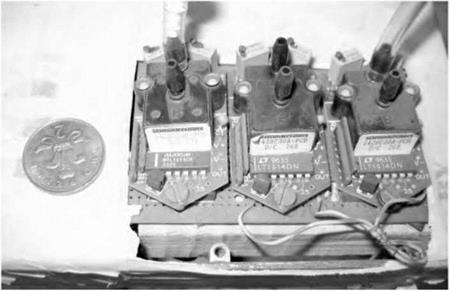Absolute and gauge pressure
In the simple U-tube manometer above, the liquid surface at В is left open to the atmosphere, so –
Pressure difference = test pressure – atmospheric pressure = p X g X b Thus –
test pressure = atmospheric pressure + p X g X b.
This is known as the absolute pressure. The pressure difference (= p X g X b) simply gives the pressure change relative to atmospheric pressure. In practice this relative pressure is all we need to know. As this pressure is the pressure obtained directly from the gauge, it has come to be referred to as gauge pressure. Sometimes it is convenient to use a different pressure source to act as our reference, instead of atmospheric pressure. We can see that –
absolute pressure = gauge pressure + atmospheric (or reference) pressure
Nowadays it is generally more convenient to use pressure transducers (Fig. 2F) to measure the pressure at the tappings.
|
Fig. 2F Pressure transducer |
The transducer produces an electrical output that is proportional to the pressure being measured and which can be recorded, through a suitable interface, directly on a computer system. Pressure transducers work in a variety of ways. For example, the pressure can be used to deform a diaphragm, which has electrical strain gauges attached to it. They can also be purchased in a wide variety of sizes and pressure ranges. Some pressure transducers measure the pressure relative to a reference source (gauge pressure transducers), others measure relative to a sealed vacuum and thus directly measure absolute pressure.












